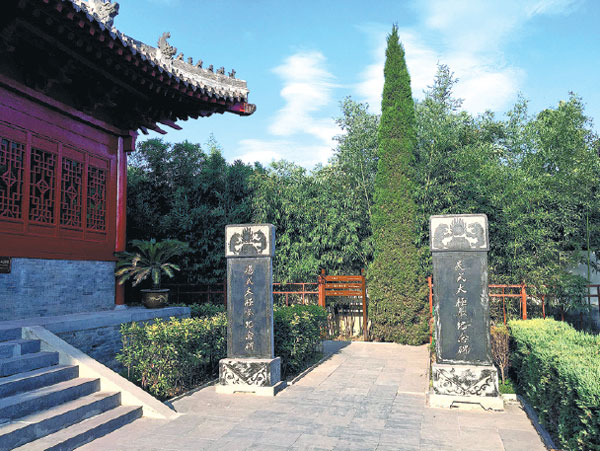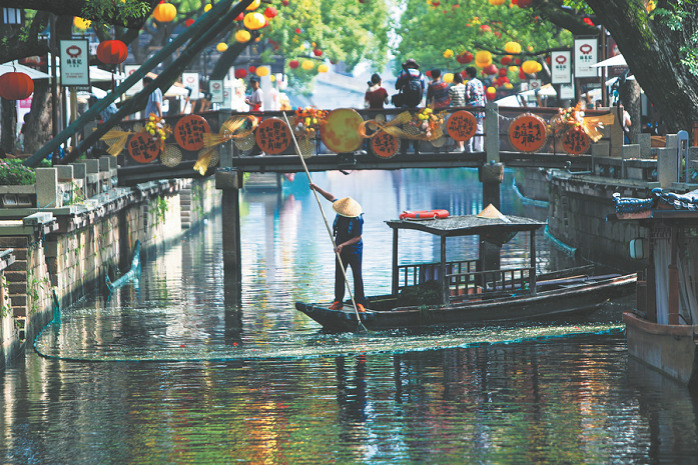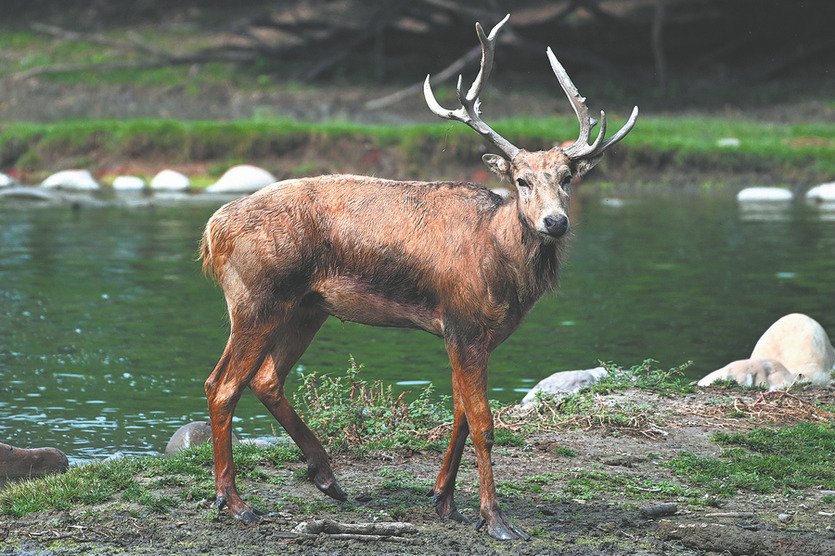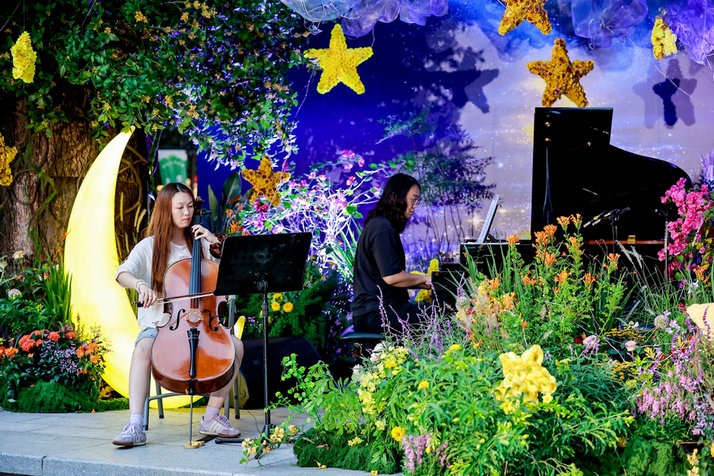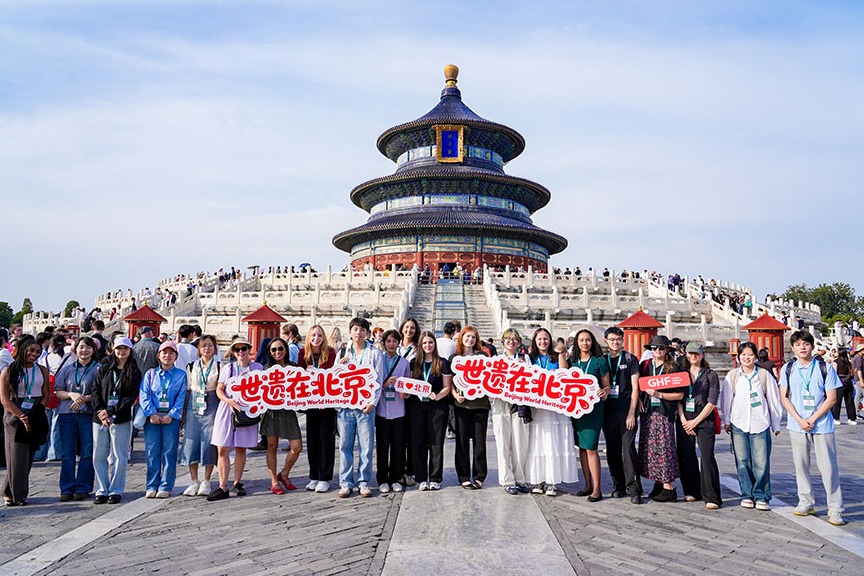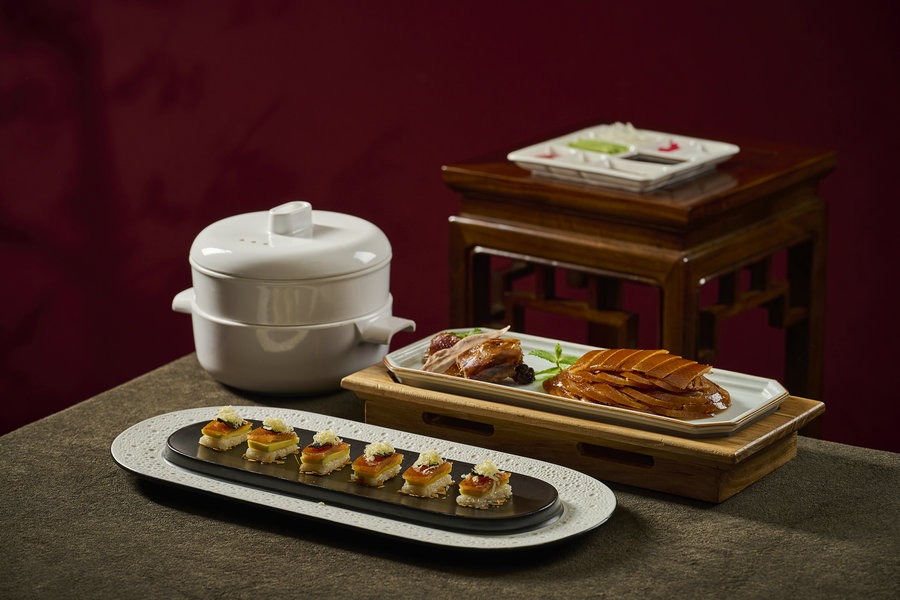Art of relaxation

Chenjiagou in Henan province is irresistible for many. It is the birthplace of tai chi, one of the most effective exercises for health of mind and body
The birthplace of tai chi has transformed itself from a poor village into a pilgrimage and tourism hot spot. An ancient farmyard and old streets paved with black bricks greet us when we enter Chenjiagou in Henan province's Wenxian county in late August.
Trees stand in a tortuous line along a river and shops with green tiles and crimson roofs wear consistently designed plaques.
The shops offer catering, wine, clothes and martial arts training, all of which have elements related to Chen-styled tai chi, created by Chen Wangting in the 1600s.
An old wooden doorway in Chenjiagou, a mute witness to the hardships of the people. Yang Feiyue / China Daily |
Tablets commemorating different styles of tai chi stand in an ancestor hall remodeled in 2004. Yang Feiyue / China Daily |
A local observes tourists coming to Chenjiagou, which has become a hot destination, as tai chi's popularity grows over the years. Yang Feiyue / China Daily |
A palace in an ancestor hall commemorating tai chi masters in Chenjiagou, Henan province. Yang Feiyue / China Daily |
The tai chi museum with stunning stone sculptures, tai chi's history and theory, as well as tai chi master's life stories opened to the public in 2009. Yang Feiyue / China Daily |
The martial art features the flexible use of soft and hard, slow and fast movements and lays a focus on a relaxed body and a calm mind.
Teenagers do handsprings in a courtyard when we enter the gym owned by the family of Zhu Xianghua, who is a 40-year-old tai chi master.
Zhu Xianghua's father Zhu Tiancai was one of the famed four masters in Chenjiagou who helped to popularize tai chi worldwide.
"Almost everyone in the village knows tai chi," says Zhu. "Local children here have learned tai chi and some have become professional trainers," adds Zhu.
However, one needs more than just skill to become a trainer. "You need to understand the meaning of tai chi culture and the theory and know how to explain them," says Zhu.
Wenxian, of which Chenjiagou is a part, was named the cradle of Chinese tai chi by the China Martial Art Association in 2007.
Recalling his link with the art, Zhu, who has practiced tai chi since he was a child, says: "There was nothing else to do but practicing tai chi after school."
Zhu, who majored in tai chi in Henan University in 1996, then traveled at home and abroad to teach the art.
"Foreigners are fascinated by our culture, in which tai chi is a significant symbol and name card," says Zhu, who has been to Japan, Malaysia, Singapore and northern Europe. "Once I do a few moves, people immediately recognize them and show an interest in learning."
Once upon a time Chenjiagou faced severe hardships. Poverty and inaccessibility to the outside forced local tai chi practitioners to leave home in the 60s and the 70s.
"They then had to make a living by teaching tai chi in the four corners of the world," says Zhu.
But this helped its development.
And as tai chi's popularity grew, Chenjiagou came to the notice of its enthusiasts.
Now, an increasing number of tai chi masters have returned to the village and set up shops.
A tai chi school was built in 1980 and has been running ever since.
There are two arenas in the school gym - one is for wrestling, and the other for free combat, a local guide tells us.
There are now roughly 40 private gyms offering tai chi education in Chenjiagou, and Zhu runs one of them.
Zhu had his father's old house renovated in 2005 and began to take in students in 2007.
Some come to learn tai chi to become masters, while others do it for health reasons or experience the culture, says Zhu.
Typically, adult visitors spend between one week to a month in the village practicing tai chi, he says.
Zhu's house can accommodate roughly 30 students and his class is usually fully booked over the May-November period with 500-800 students every year.
Meanwhile, many of the 3,000 locals like Zhu have benefited from the tai chi culture, and some make a living from training.
In addition, approximately 200 local trainers teach abroad making $100-$300 an hour.
Besides teaching tai chi, many have seen their income increases by offering catering and accommodation and selling tai chi costumes.
Zhu says that the village's prosperity is mainly due to government efforts.
The Wenxian government began to tap into the significance of Chenjiagou back in 2004 when stone-paved roads were built and a grand stone gate was erected.
The county then invested 33 million yuan ($5 million) remodeling an ancestor hall for tai chi masters.
Now, well-manicured trees line the courtyard leading to the hall, with buildings on three sides. A sculpture of Chen tai chi founder Chen Wangting stands tall in the front and tablets commemorating other styles of tai chi are on the sides.
To date, the hall has seen more than 1.1 million visits by tai chi enthusiasts from home and abroad.
A tai chi museum covering an area of 2,800 square meters opened to the public in 2009.

The museum sits in a grand plaza with stone sculptures showcasing tai chi moves.
Visitors can access tai chi history and theory, as well as tai chi master's life stories in the museum.
As we walk around the village, we see a lot of construction in progress. A water diversion canal, toilets and lighting are coming down the pike.
Yuan Shuai, a local government official, says: "We plan to build Chenjiagou into a world-class place for tai chi."
As part of the grand plan, a tai chi town will receive 60 million yuan in investment. Also, many national tai chi events, including competitions and seminars are being staged in the village.
With these changes, Zhu says more visitors will come to sample tai chi in future.
"Unlike physically demanding sports, tai chi is suitable for people of all ages," he says.
Speaking about the benefits of tai chi, Zhu says that it has helped him to find inner peace.
"The key to practicing tai chi is to find a balance of movements and the mind," says Zhu.
"You get an insight into Chinese culture which really calms the mind and frees you from earthly worries," he says.
Contact the writer at yangfeiyue@chinadaily.com.cn
(China Daily 10/02/2017 page10)

















